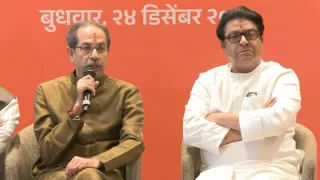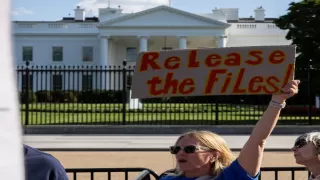After an exhausting 43-day political stalemate, President Donald Trump has finally signed a government funding bill, ending the longest government shutdown in U.S. history. The shutdown had taken a severe toll on federal employees, disrupted major services, and left millions of Americans feeling the ripple effects of stalled government operations. With the stroke of his pen, Trump aimed to restore normalcy and reopen the doors of countless federal agencies that had been shuttered for over a month.
For weeks, Washington had been in gridlock. Federal workers went without pay, airport security lines stretched endlessly, and vital assistance programs were put on hold. The shutdown became a symbol of deep partisan division, as both Democrats and Republicans traded blame while Americans across the country suffered the consequences. The reopening brings relief, but also raises new questions about the future of bipartisanship and the political cost of such prolonged crises.
The funding bill signed by the President ensures that federal employees receive back pay and that crucial public services can resume immediately. Yet, behind the celebrations, tensions remain. Both sides are already preparing for another policy showdown over tax credits and health care subsidies that could define the political landscape heading into next year’s elections.
Democrats Criticize Republicans for “Going on Vacation” During Crisis
As federal workers struggled without paychecks and public frustration mounted, Democrats accused Republicans of failing to act with urgency. They argued that while the nation’s workforce suffered, some GOP lawmakers were absent from Washington, leaving critical decisions unaddressed. The Democrats seized on this moment to portray Republicans as indifferent to the struggles of ordinary Americans, a narrative that gained traction as images of food bank lines and airport chaos filled the news cycle.
Democratic leaders pointed out that food assistance benefits were expiring and essential programs were grinding to a halt. They accused the opposition of prioritizing political theater over practical governance. The prolonged inaction, they claimed, revealed a lack of empathy and responsibility among those in power. This messaging could prove influential as both parties brace for the 2026 midterm elections.
Trump’s Defiant Stance and Blame on Democrats
President Trump maintained a combative tone throughout the shutdown, insisting that Democrats were to blame for the impasse. He repeatedly stated that their refusal to compromise was the primary reason for the government’s paralysis. At the signing ceremony, Trump declared that Americans should “never forget” what the opposition had done, framing the issue as one of national loyalty and responsibility.
His remarks reinforced his broader strategy of appealing directly to his base, who viewed the standoff as a necessary stand against what they saw as Democratic obstructionism. However, critics argue that the President’s actions — including attempts to unilaterally fire federal workers and cancel major projects — only deepened the crisis. The political fallout from these decisions could shape future legislative negotiations and voter sentiment.
Congress Passes the Measure After Heated Debate
The House passed the funding bill in a narrow 222-209 vote, reflecting how deeply divided lawmakers remain. The Senate had already approved the measure earlier in the week, setting the stage for Trump’s signature. The legislation represents a fragile truce between two political factions unwilling to fully yield on their priorities. For Democrats, extending health care tax credits was non-negotiable, while Republicans insisted that such measures should be debated separately.
During the House debate, tensions flared as members from both sides accused one another of exploiting the shutdown for political gain. Representative Tom Cole, a senior Republican, acknowledged that shutdowns “never achieve their objectives,” urging lawmakers to avoid such confrontations in the future. Yet, his remarks were met with skepticism from Democrats, who claimed Republicans had engineered the crisis to force concessions on unrelated policy issues.
The Political Fallout and Economic Consequences
The shutdown’s impact extended far beyond Washington. Across the nation, hundreds of thousands of federal workers missed paychecks, leading to financial hardship and rising public anger. Airports struggled with staffing shortages, leading to widespread delays and cancellations. Local food banks reported record demand, as affected families turned to community resources for support.
Economists estimate that the 43-day halt cost billions in lost productivity and consumer confidence. The prolonged uncertainty rattled markets and disrupted small businesses dependent on federal contracts. As the government reopens, restoring trust in its ability to function efficiently remains a formidable challenge.
What the Funding Bill Includes
The newly passed legislation allocates funding for several key federal departments through January 30. It reverses the controversial firings of federal workers carried out during the shutdown and provides job security for employees until at least early next year. Additionally, it secures full back pay for all affected workers and restores funding for food assistance programs, ensuring stability for millions who rely on government aid.
Among the more contentious inclusions is a $203.5 million boost for congressional security and $28 million to enhance protection for Supreme Court justices. The bill also includes provisions allowing lawmakers to sue federal agencies for unauthorized access to their electronic records, a clause that has drawn criticism from both parties for its last-minute addition.
Renewed Battles Over Health Care Subsidies
One of the most divisive issues during the negotiations was the future of enhanced health care tax credits introduced during the pandemic. Democrats argued that ending these subsidies would drastically increase health care costs, potentially doubling premiums for millions and stripping coverage from over two million Americans. Republicans countered that the program was an unnecessary extension of temporary COVID-era relief and should be allowed to expire.
Despite agreeing to reopen the government, both parties signaled that the fight over health care is far from over. Some moderate Republicans, such as Senator Susan Collins, suggested extending the subsidies with modifications, like adding income caps. Democrats expressed cautious optimism but warned that any rollback of benefits would disproportionately hurt middle-class families already facing economic strain.
Reactions from Lawmakers and Analysts
Lawmakers across the spectrum expressed relief that the government would finally resume operations but acknowledged that deep divisions remain unresolved. Representative Nancy Pelosi emphasized that Republicans’ resistance to affordable health care initiatives continues to harm ordinary Americans. Meanwhile, House Speaker Mike Johnson criticized Democrats for leveraging public suffering to gain political advantage.
Political analysts suggest that both sides are now maneuvering for public favor ahead of the next election cycle. The shutdown’s narrative — who caused it, who ended it, and who benefited politically — will likely dominate campaign rhetoric for months to come. While the immediate crisis has passed, the underlying ideological conflict remains as fierce as ever.
The Road Ahead: Can Washington Learn from the Shutdown?
As normalcy returns, questions linger about whether Washington’s leaders have truly learned from this ordeal. The 43-day shutdown exposed the fragility of America’s political system and the dangers of brinkmanship. While the funding bill has restored operations, it has not resolved the partisan divides that led to the crisis in the first place.
For millions of Americans, the reopening offers a sigh of relief but little comfort. The specter of another shutdown looms large if Congress fails to reach lasting agreements on spending and social policies. As President Trump and lawmakers prepare for the next phase of negotiation, the nation watches closely — hoping that this time, the lessons of compromise outweigh the politics of confrontation.
Conclusion: Relief with Caution
The end of the record 43-day shutdown marks a pivotal moment in American governance. It is both a victory for functionality and a reminder of how political gridlock can disrupt lives. As federal workers return, airports stabilize, and aid programs resume, the nation looks toward rebuilding trust in its institutions. Yet, without meaningful bipartisan cooperation, the relief may only be temporary.
For now, the government is open, paychecks are flowing again, and the machinery of democracy has restarted. But the real question is whether leaders in Washington can prevent history from repeating itself — or whether another political showdown is already on the horizon.
Also Read: NASA’s ESCAPADE Mission to Mars: Twin Satellites Explained



















